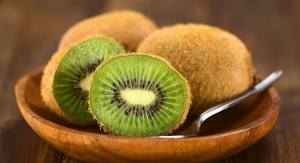Joerg Gruenwald09.01.07
Functional Confectionery: A European Perspective
There are plenty of nutraceutical ingredients that could find their way into functional confectionery products.
By Joerg Gruenwald
Following the categories of functional foods and functional cosmetics (beauty foods), the new segment of functional confectionery is developing strongly. Historically this category has roots in typical cough & cold and sore throat remedies, but confectioneries are by no means limited to these and are currently looking to improve their image. Confectioneries are still often criticized as unhealthy products, requiring special marketing strategies. Benefits out of the botanical kingdom, when added to confectioneries, open up new opportunities here as they do in functional foods in general.
Herbs in particular are of rising importance to the confectionery industry. They have been used traditionally in throat-soothing candies and sweets for decades. Herbs add flavor to all food forms, including confectionery, and with their healthy image, they can also be considered “trendy” ingredients. Plus, their proven effectiveness can, in sufficient quantities, even add a medical function to a confectionery product.
The use of herbs in confectionery products range from throat, cough and sinus remedies, to digestive, dental/gum care and immune stimulation products. In addition, newly discovered benefits of traditional ingredients, such as the antioxidant power of the flavanols contained in chocolate, increase consumer appeal and move the segment away from its image of guilty indulgence and unhealthy calories.
Market Situation
The global functional confectionery market was worth about $ 7.4 billion in 2005, accounting for 24% of the total functional food market. The segment continues to be dominated by global brands such as Wrigley’s.
While functional foods in general and functional confectionery in particular are on the rise in most markets, there are some exceptions. In Germany, factors such as market maturity, price pressure from private label, and rising health concerns have had a depressing influence on sales, resulting in a functional confectionery growth rate of just 1% in 2006. This seems to be at odds with the development of functional foods in general, where Germany is traditionally a-mong the leading markets in Europe. Unfortunately, the usual openness of consumers to functional benefits seems to be lacking when it comes to functional sweets and chocolates.
The prevalent health and wellness trends are influencing consumer decisions when buying chocolate, even the functional kind. At the root lie rising concerns about obesity, which are beginning to affect this largest confectionery segment in Germany. Conversely, the sugar-free segment has become a significant category. Functional confectionery with a traditional medicated image, such as Ricola and Wick, also have performed well.
It seems that German consumers are not as ready as others to overindulge on chocolate, given the added incentive of antioxidant benefits, and it remains to be seen if this situation will continue.
The category most affected by the health trend in Germany is gum. Despite the experience of xylitol containing gums in other countries, German consumers are still convinced that chewing gum causes tooth decay. Add to that an aging population and a low birth rate, and you have a situation leading to stagnating retail sales of gum in 2006. However, within gum, products with breath freshening and dental care properties are the most popular, which, again, argues for the advantages of adding functional benefits.
New Ingredients for Confectionery Products
Many botanicals are used in food mostly to add different flavors. But that is not the only reason. Many spices have been known for their medicinal uses for hundreds of years, so it is not surprising that these usages are being confirmed by modern science. Spices such as ginger, chili and garlic have been used as main or sole constituents of drugs for some years now, and while confectionery products containing garlic may be somewhat rare, they do exist as ginger or chili blended with chocolate.
Other culinary herbs combine taste with functionality, such as mint, sage, thyme, rosemary, cumin, anise, fennel, coriander and the aforementioned ginger; they all have some in vitro anticancer effects. Herbs like rosemary, sage, oregano, thyme, onions and garlic act as antioxidants and protect from LDL oxidation, reducing the risk for cardiovascular disease. Lemongrass, fenugreek, linseed and garlic help lower cholesterol, and ginger helps fight motion sickness.
These are just a few examples of the many known benefits to be derived from herbs. In confectioneries, they can fulfill a number of functions, ranging from energy/stimulation to mental/physical performance to oral and throat health.
Many of the ingredients currently used in functional drinks are increasingly being scouted for functional confectionery products. Apart from vitamins and minerals used in fortified sweets and jellies, there are dietary fibers (beta-glucan, inulin, cellulose, galactomannan), soy protein and isoflavones, botanical extracts (caffeine, green tea) fruits and vegetables, and even probiotic bacteria, just to name a few.
Some of the so-called “superfruits” used in functional confectionery products include cranberries (Vaccinum macrocarpon), which not only boasts high vitamin C content, but also contains omega 3 fatty acids and antioxidants in the form of proanthocyanidins and flavanoids. Cranberries are often used in snack bars and energy bars, as they add a pleasantly sour taste. Other superfruits include açai, acerola, mangosteen, goji, jabotacaba and passionfruit.
Apart from those ingredients already mentioned, natural sugar replacement substances such as xylitol and maltitol are very popular in the large sugar-free segment of the functional confectionery market, especially in chewing gum where xylitol adds the health benefit of prevention of tooth decay. There are also some legacies from the dietary supplement arena, such as CoQ10, folic acid, zinc gluconate and lycopene, which have found their way into functional confectionery products.
For the manufacture of functional confectionery products, adding highly concentrated compounds of functional ingredients at the end of the cooking process has been particularly effective. As far as flavors are concerned, there is a move toward the exotic flavors of tropical fruit, since they are associated as being superfruits in consumers’ minds.
Summary
The functional confectionery segment is one with strong potential. Since the idea of adding ingredients with tangible benefits has already been brought to consumers’ attention through functional foods in general, functional confectionery products do not require strong consumer education. Thus, the market is ripe for more innovative products. However, it remains to be seen how the new European health claim directive—which requires products to state the amounts of potentially unhealthy ingredients on products claiming health benefits—will affect the functional confectionery market in future.NW


























